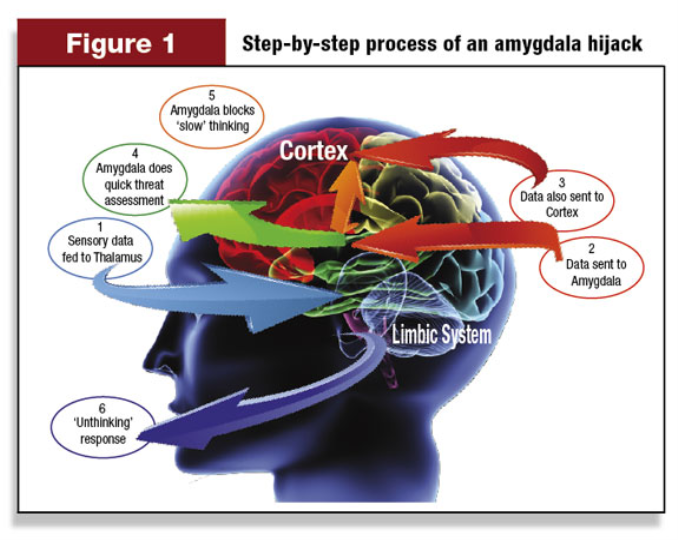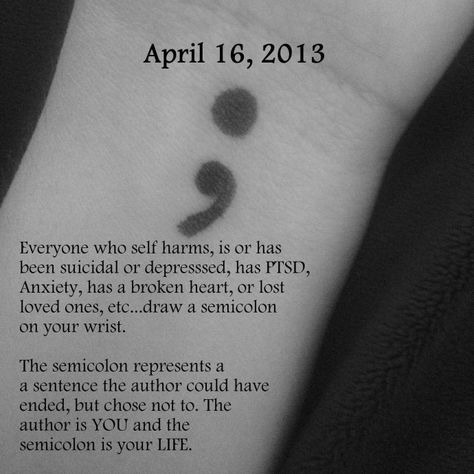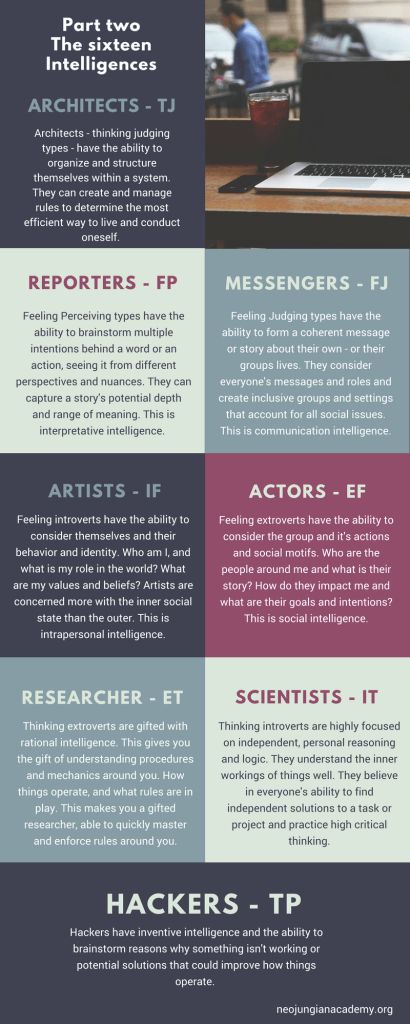What is amygdala hijack
What It Is, Why It Happens & How to Make It Stop
An amygdala hijack is an emotional response to stress. But to better understand what an amygdala hijack is, you’ll need to understand a bit about how the brain functions. You’ll also need to understand two specific parts of the brain: the amygdala and the frontal lobes.
Amygdala
The amygdala is a cluster of almond-shaped cells located near the base of the brain. Everyone has two of these cell groups, one in each hemisphere (or side) of the brain.
The amygdalae help define and regulate emotions. They also preserve memories and attach those memories to specific emotions (such as happy, sad, joyous). These are called emotional remembrances.
The amygdala is part of the brain’s limbic system. The limbic system is a group of complex, interconnected structures within the brain that are responsible for a person’s emotional and behavioral responses.
Fight or flight
The amygdala also activates the fight-or-flight response.
This response can help people in immediate physical danger react quickly for their safety and security. For example, the fight-or-flight response helped early humans respond to threats to avoid being injured or killed.
The amygdala activates this fight-or-flight response without any initiative from you. When that part of your brain senses danger, it signals your brain to pump stress hormones, preparing your body to either fight for survival or to flee to safety.
Today, that fight-or-flight response is more likely to be triggered by emotions such as stress, fear, anxiety, aggression, and anger.
Frontal lobes
To understand what an amygdala hijack is, you need to know about a second part of the brain: the frontal lobes. These two, large areas are located at the front of your brain.
The front lobes are part of the brain’s cerebral cortex. This area of the brain regulates voluntary actions like reasoning, thinking, movement, decision-making, and planning.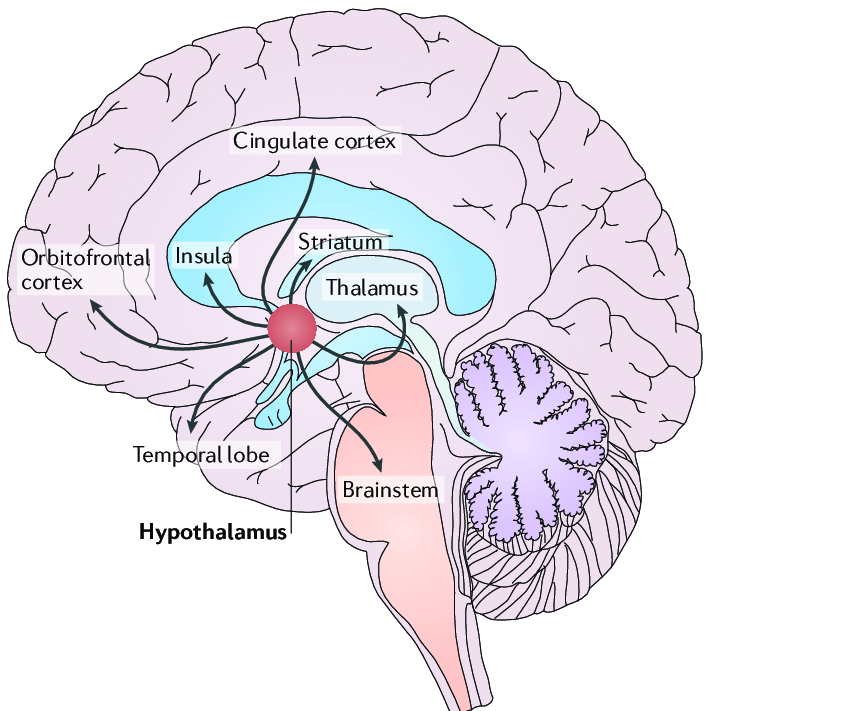 It is more rational than the amygdala.
It is more rational than the amygdala.
The front lobes allow you to evaluate your emotions and then use your experiences and judgement to consciously respond. These reactions are not automatic, like the ones generated by the amygdala.
In the event of a physical threat, the amygdala may jump to the fight-or-flight response, but the front lobes process the information you’re receiving to help you determine if the danger is real. If the danger isn’t immediate, the frontal lobes help you decide what to do in response to the stress.
For mild or moderate threats, the frontal lobes can often override your amygdala so you can approach the situation rationally. But in the case of strong threats, the amygdala may trigger the fight-or-flight response.
For early humans, the fight-or-flight response was vital. The threat of physical harm was very real.
Today, however, you’re more likely to experience psychological threats, such as the pressures and stress of modern life, work, and relationships.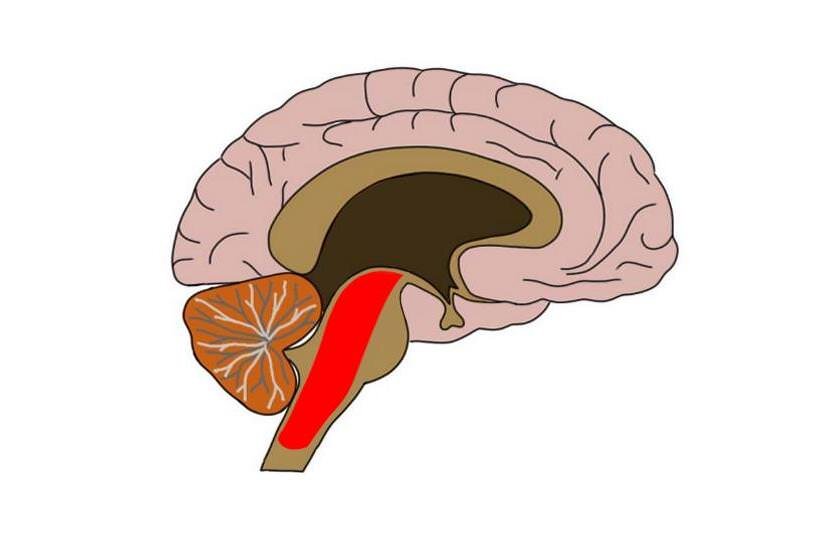 These emotions, too, can trigger the amygdala’s fight-or-flight response.
These emotions, too, can trigger the amygdala’s fight-or-flight response.
Anger, aggression, fear, and stress are all common emotional triggers. They can cause sudden, illogical, and even irrational reactions.
In his 1995 book “Emotional Intelligence: Why It Can Matter More Than IQ,” psychologist Daniel Goleman named this emotional overreaction to stress “amygdala hijack.” The amygdala hijack occurs when your amygdala responds to stress and disables your frontal lobes. That activates the fight-or-flight response and disables rational, reasoned responses. In other words, the amygdala “hijacks” control of your brain and your responses.
You can find the book for sale online.
Goleman was also responsible for popularizing the concept of emotional intelligence (EI). He explained how EI can help people manage their emotions and guide their behavior and thinking. Where amygdala hijack is natural and immediate, EI can help you regain control.
EI can also help you recognize the emotions of other people so that you can understand and influence them.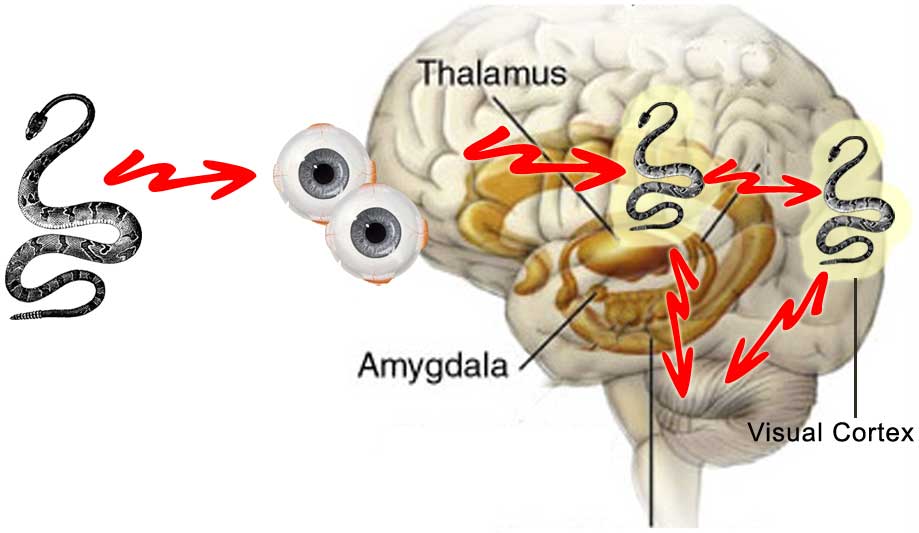 However, Goleman’s idea of EI emphasizes that individuals must first be aware of their own emotions and the feelings of people around them before they can use it for others.
However, Goleman’s idea of EI emphasizes that individuals must first be aware of their own emotions and the feelings of people around them before they can use it for others.
The symptoms of an amygdala hijack are caused by the body’s chemical response to stress. When you experience stress, your brain releases two kinds of stress hormones: cortisol and adrenaline. Both of these hormones, which are released by the adrenal glands, prepare your body to fight or to flee.
Together, these stress hormones do a number of things to your body in response to stress. They:
- increase blood flow to muscles, so you have more strength and speed to fight or flee
- expand your airways so you can take in and use more oxygen
- increase blood sugar to provide you immediate energy
- dilate pupils to improve your vision for faster responses
When these hormones are released, you may experience:
- rapid heartbeat
- sweaty palms
- clammy skin
- goosebumps on the surface of your skin
An amygdala hijack may lead to inappropriate or irrational behavior.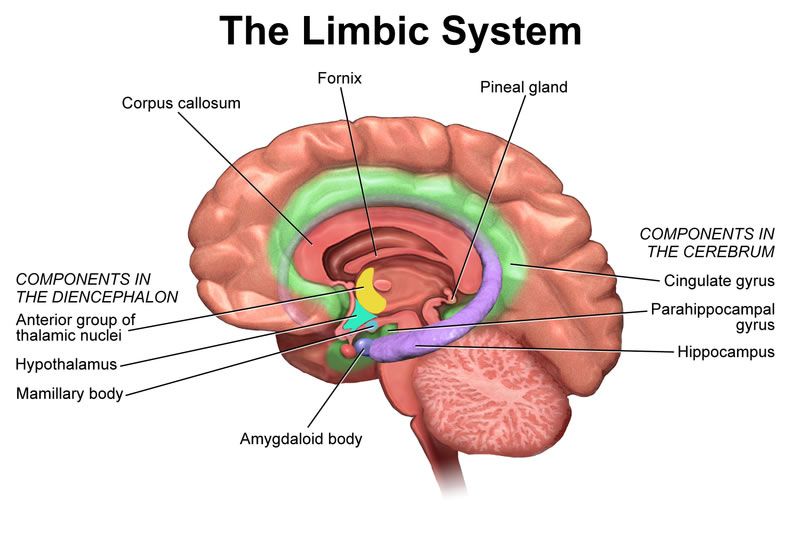 After an amygdala hijack, you may experience other symptoms like embarrassment and regret.
After an amygdala hijack, you may experience other symptoms like embarrassment and regret.
An amygdala hijack is an automatic response. Your body takes action without any conscious input from you.
However, that does not mean you will be unable to stop or prevent an amygdala hijack. It just takes a conscious effort to deactivate your amygdala and activate your frontal lobes, the part of your brain responsible for rational, logical thinking.
When you feel threatened or significantly stressed, acknowledge how your body feels and what it is doing. This is your body’s flight-or-fight response. Take stock of your emotions and physical symptoms, if any. (In the beginning, this evaluation may have to occur after an episode, as stopping a hijack in the moment may be difficult.
Then, when you feel this response again, acknowledge it, and work to regain control. Remind yourself this is an automatic response, but not the most logical one.
When you have calmed down or feel less stressed, you can activate your frontal cortex.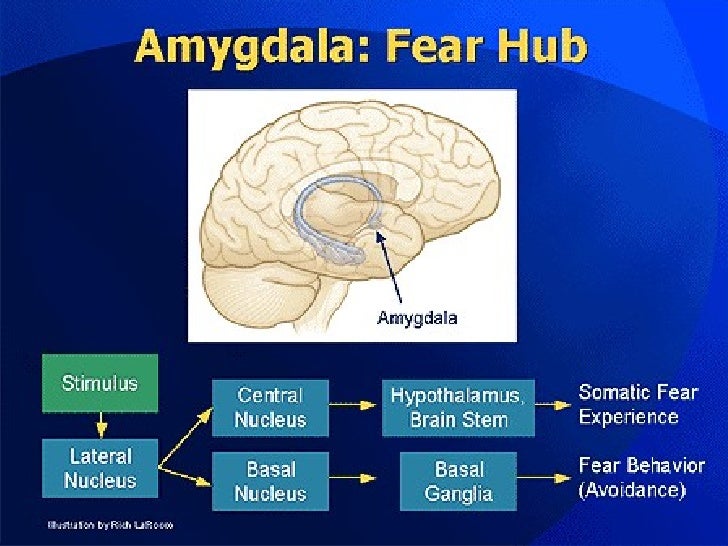 Begin by thinking about what activated the response, and how you felt. Then, consider responses you can and should have. These will be more thoughtful and rational responses. If you still feel emotional in the moment, give yourself more time.
Begin by thinking about what activated the response, and how you felt. Then, consider responses you can and should have. These will be more thoughtful and rational responses. If you still feel emotional in the moment, give yourself more time.
During the height of a fight-or-flight response, breathing can be a powerful tool. Think about the speed of your breath, and work to slow it down. Find a calm, natural rhythm. Focus on how your body feels as you inhale and exhale.
After the response has passed, review what happened. Consider the triggers that led to the fight-or-flight response. When you recognize warning signs and triggers, you may be able to more easily handle the stress that leads to the response in the first place.
The best way to prevent an amygdala hijack is to understand what things trigger the reaction so you can avoid them. Alternatively, you can use practices like mindfulness to help you better control your body’s responses when you feel the reaction.
Emotional, mental, and even physical stress can trigger the amygdala’s fight-or-flight response. When you begin to feel the symptoms of an amygdala hijack, pause. Take note of what you’re feeling and what led you to this moment. Recognize any bodily changes you’re experiencing.
When you begin to feel the symptoms of an amygdala hijack, pause. Take note of what you’re feeling and what led you to this moment. Recognize any bodily changes you’re experiencing.
Also, consider what triggered these feelings. Most people’s triggers will fall into the same general categories (stress, anger, aggression), but each person’s triggers will be unique to them.
These are the beginning steps of a practice called mindfulness. Mindfulness helps you be more present and engaged in your responses and choices.
Through mindfulness, you can take stock of things like how you’re feeling and what’s stimulating you. You can learn to respond rationally and logically. This is another way of saying you can take control away from your amygdala and hand it back to your frontal cortex.
Mindfulness takes practice. It’s easy to wander with your thoughts when you first try to focus on your body and feelings. But as with so many things, practice makes it easier.
Plus, it’s important to practice these techniques regularly, not just when you’re in a highly emotional state.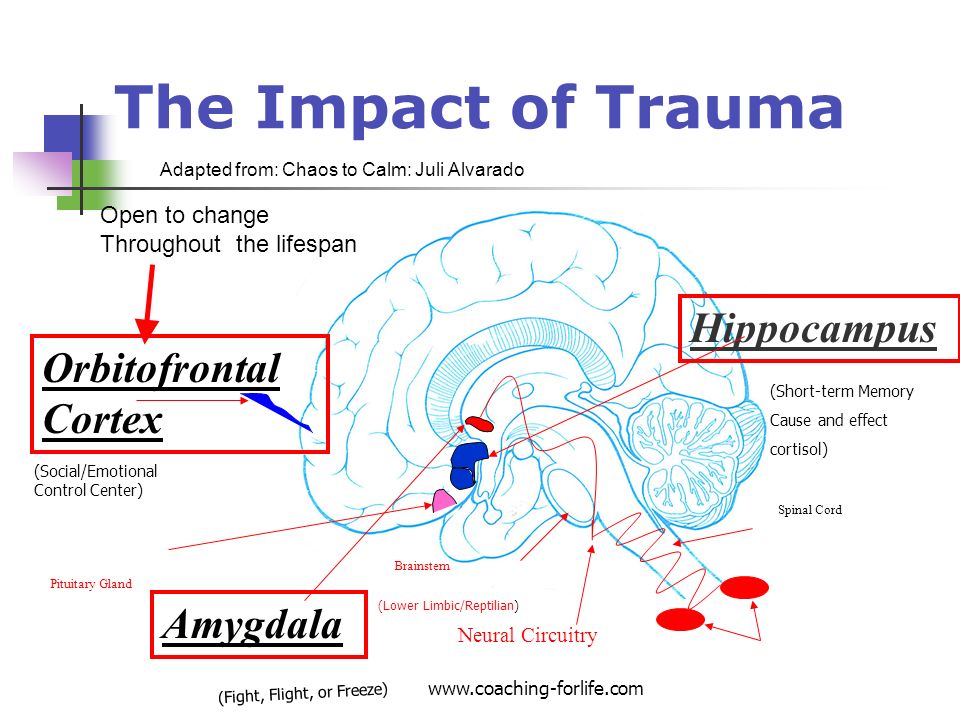
One way to help focus your mind during mindfulness practice is to actively control your breathing. Focus on inhaling and exhaling. Concentrate on how the air makes you feel in the moment, and notice how your body moves in response to the air.
While you may find other ways to prevent an amygdala hijack, these two are the primary ways. Learning to avoid triggers can stop your amygdala from having a chance to overrule your emotional control. Mindfulness can help you slow and reverse the emotional responses.
Techniques to stop an amygdala hijack
- Reasoning. Once you have calmed your emotional response, you can use reasoning and logic to think through your situation. This way, you have options for how you will respond, and you can pick the one that best suits the situation, not one that fulfills an emotional reaction.
- Mindfulness. Use meditation or controlled breathing to focus your body’s energy. This will help you respond to a threat or stress in a peaceful way.
It will help you stop an amygdala hijack so you can retain control.
The amygdala’s fight-or-flight response was useful to early humans. They regularly experienced real, immediate physical threats. Today, that’s not the case.
The modern world is full of stress, but it’s often caused by reactions to events, like natural disasters and strife, or even work, traffic, and arguments with family. The amygdala still responds to this stress as if it were a physical threat.
However, you can prevent this amygdala hijack. You can gain control over your brain’s irrational emotional reactions.
You can do this by slowing down, taking deep breaths, and refocusing your thoughts. These steps allow your brain’s frontal lobes to take over for the irrational amygdala. When this happens, you have control over your responses, and you won’t be left feeling regret or embarrassment at your behavior.
What It Is, Why It Happens & How to Make It Stop
An amygdala hijack is an emotional response to stress. But to better understand what an amygdala hijack is, you’ll need to understand a bit about how the brain functions. You’ll also need to understand two specific parts of the brain: the amygdala and the frontal lobes.
But to better understand what an amygdala hijack is, you’ll need to understand a bit about how the brain functions. You’ll also need to understand two specific parts of the brain: the amygdala and the frontal lobes.
Amygdala
The amygdala is a cluster of almond-shaped cells located near the base of the brain. Everyone has two of these cell groups, one in each hemisphere (or side) of the brain.
The amygdalae help define and regulate emotions. They also preserve memories and attach those memories to specific emotions (such as happy, sad, joyous). These are called emotional remembrances.
The amygdala is part of the brain’s limbic system. The limbic system is a group of complex, interconnected structures within the brain that are responsible for a person’s emotional and behavioral responses.
Fight or flight
The amygdala also activates the fight-or-flight response.
This response can help people in immediate physical danger react quickly for their safety and security. For example, the fight-or-flight response helped early humans respond to threats to avoid being injured or killed.
For example, the fight-or-flight response helped early humans respond to threats to avoid being injured or killed.
The amygdala activates this fight-or-flight response without any initiative from you. When that part of your brain senses danger, it signals your brain to pump stress hormones, preparing your body to either fight for survival or to flee to safety.
Today, that fight-or-flight response is more likely to be triggered by emotions such as stress, fear, anxiety, aggression, and anger.
Frontal lobes
To understand what an amygdala hijack is, you need to know about a second part of the brain: the frontal lobes. These two, large areas are located at the front of your brain.
The front lobes are part of the brain’s cerebral cortex. This area of the brain regulates voluntary actions like reasoning, thinking, movement, decision-making, and planning. It is more rational than the amygdala.
The front lobes allow you to evaluate your emotions and then use your experiences and judgement to consciously respond. These reactions are not automatic, like the ones generated by the amygdala.
These reactions are not automatic, like the ones generated by the amygdala.
In the event of a physical threat, the amygdala may jump to the fight-or-flight response, but the front lobes process the information you’re receiving to help you determine if the danger is real. If the danger isn’t immediate, the frontal lobes help you decide what to do in response to the stress.
For mild or moderate threats, the frontal lobes can often override your amygdala so you can approach the situation rationally. But in the case of strong threats, the amygdala may trigger the fight-or-flight response.
For early humans, the fight-or-flight response was vital. The threat of physical harm was very real.
Today, however, you’re more likely to experience psychological threats, such as the pressures and stress of modern life, work, and relationships. These emotions, too, can trigger the amygdala’s fight-or-flight response.
Anger, aggression, fear, and stress are all common emotional triggers. They can cause sudden, illogical, and even irrational reactions.
They can cause sudden, illogical, and even irrational reactions.
In his 1995 book “Emotional Intelligence: Why It Can Matter More Than IQ,” psychologist Daniel Goleman named this emotional overreaction to stress “amygdala hijack.” The amygdala hijack occurs when your amygdala responds to stress and disables your frontal lobes. That activates the fight-or-flight response and disables rational, reasoned responses. In other words, the amygdala “hijacks” control of your brain and your responses.
You can find the book for sale online.
Goleman was also responsible for popularizing the concept of emotional intelligence (EI). He explained how EI can help people manage their emotions and guide their behavior and thinking. Where amygdala hijack is natural and immediate, EI can help you regain control.
EI can also help you recognize the emotions of other people so that you can understand and influence them. However, Goleman’s idea of EI emphasizes that individuals must first be aware of their own emotions and the feelings of people around them before they can use it for others.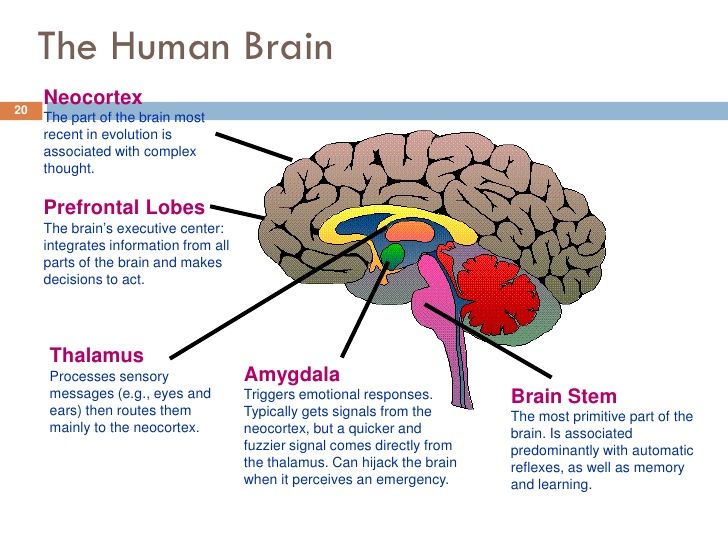
The symptoms of an amygdala hijack are caused by the body’s chemical response to stress. When you experience stress, your brain releases two kinds of stress hormones: cortisol and adrenaline. Both of these hormones, which are released by the adrenal glands, prepare your body to fight or to flee.
Together, these stress hormones do a number of things to your body in response to stress. They:
- increase blood flow to muscles, so you have more strength and speed to fight or flee
- expand your airways so you can take in and use more oxygen
- increase blood sugar to provide you immediate energy
- dilate pupils to improve your vision for faster responses
When these hormones are released, you may experience:
- rapid heartbeat
- sweaty palms
- clammy skin
- goosebumps on the surface of your skin
An amygdala hijack may lead to inappropriate or irrational behavior. After an amygdala hijack, you may experience other symptoms like embarrassment and regret.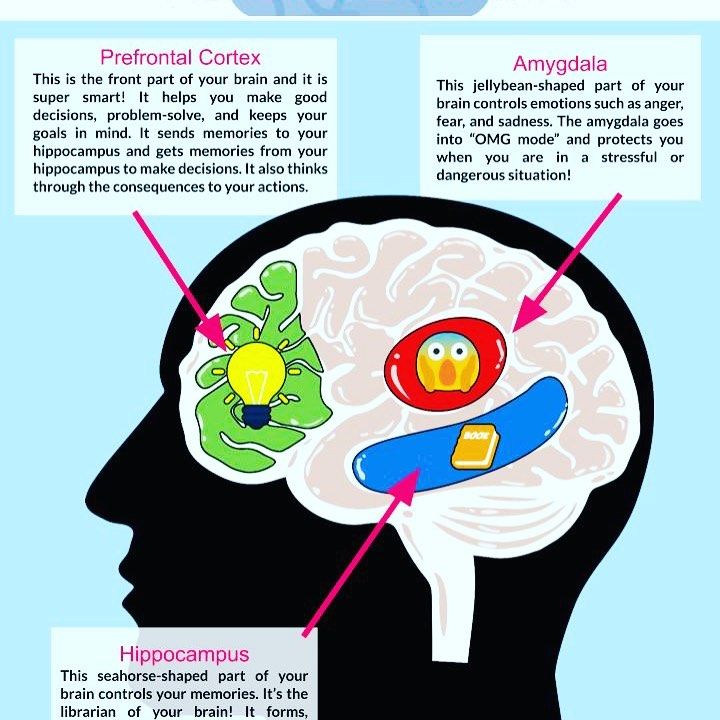
An amygdala hijack is an automatic response. Your body takes action without any conscious input from you.
However, that does not mean you will be unable to stop or prevent an amygdala hijack. It just takes a conscious effort to deactivate your amygdala and activate your frontal lobes, the part of your brain responsible for rational, logical thinking.
When you feel threatened or significantly stressed, acknowledge how your body feels and what it is doing. This is your body’s flight-or-fight response. Take stock of your emotions and physical symptoms, if any. (In the beginning, this evaluation may have to occur after an episode, as stopping a hijack in the moment may be difficult.
Then, when you feel this response again, acknowledge it, and work to regain control. Remind yourself this is an automatic response, but not the most logical one.
When you have calmed down or feel less stressed, you can activate your frontal cortex. Begin by thinking about what activated the response, and how you felt.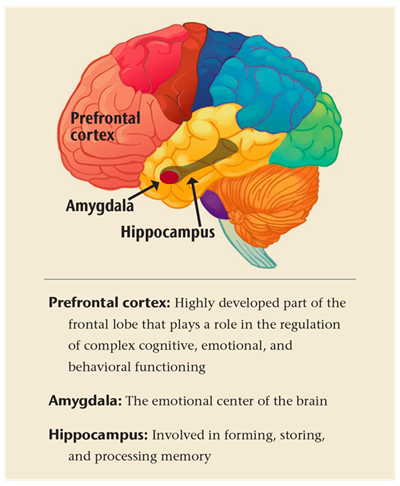 Then, consider responses you can and should have. These will be more thoughtful and rational responses. If you still feel emotional in the moment, give yourself more time.
Then, consider responses you can and should have. These will be more thoughtful and rational responses. If you still feel emotional in the moment, give yourself more time.
During the height of a fight-or-flight response, breathing can be a powerful tool. Think about the speed of your breath, and work to slow it down. Find a calm, natural rhythm. Focus on how your body feels as you inhale and exhale.
After the response has passed, review what happened. Consider the triggers that led to the fight-or-flight response. When you recognize warning signs and triggers, you may be able to more easily handle the stress that leads to the response in the first place.
The best way to prevent an amygdala hijack is to understand what things trigger the reaction so you can avoid them. Alternatively, you can use practices like mindfulness to help you better control your body’s responses when you feel the reaction.
Emotional, mental, and even physical stress can trigger the amygdala’s fight-or-flight response. When you begin to feel the symptoms of an amygdala hijack, pause. Take note of what you’re feeling and what led you to this moment. Recognize any bodily changes you’re experiencing.
When you begin to feel the symptoms of an amygdala hijack, pause. Take note of what you’re feeling and what led you to this moment. Recognize any bodily changes you’re experiencing.
Also, consider what triggered these feelings. Most people’s triggers will fall into the same general categories (stress, anger, aggression), but each person’s triggers will be unique to them.
These are the beginning steps of a practice called mindfulness. Mindfulness helps you be more present and engaged in your responses and choices.
Through mindfulness, you can take stock of things like how you’re feeling and what’s stimulating you. You can learn to respond rationally and logically. This is another way of saying you can take control away from your amygdala and hand it back to your frontal cortex.
Mindfulness takes practice. It’s easy to wander with your thoughts when you first try to focus on your body and feelings. But as with so many things, practice makes it easier.
Plus, it’s important to practice these techniques regularly, not just when you’re in a highly emotional state.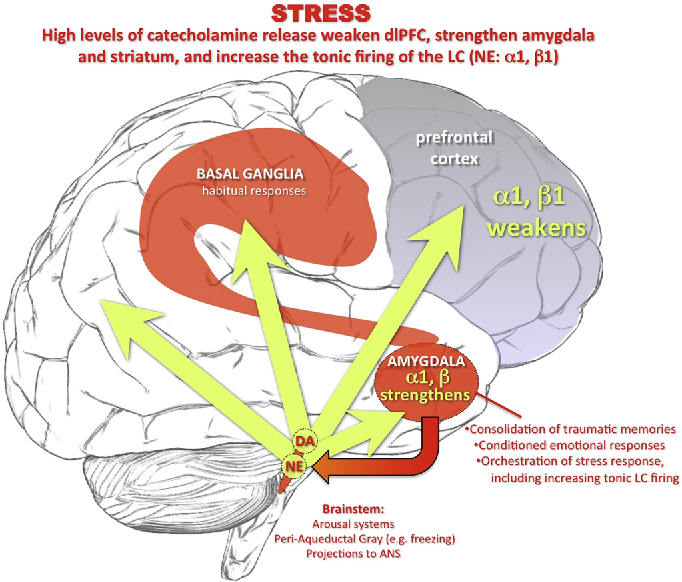
One way to help focus your mind during mindfulness practice is to actively control your breathing. Focus on inhaling and exhaling. Concentrate on how the air makes you feel in the moment, and notice how your body moves in response to the air.
While you may find other ways to prevent an amygdala hijack, these two are the primary ways. Learning to avoid triggers can stop your amygdala from having a chance to overrule your emotional control. Mindfulness can help you slow and reverse the emotional responses.
Techniques to stop an amygdala hijack
- Reasoning. Once you have calmed your emotional response, you can use reasoning and logic to think through your situation. This way, you have options for how you will respond, and you can pick the one that best suits the situation, not one that fulfills an emotional reaction.
- Mindfulness. Use meditation or controlled breathing to focus your body’s energy. This will help you respond to a threat or stress in a peaceful way.
It will help you stop an amygdala hijack so you can retain control.
The amygdala’s fight-or-flight response was useful to early humans. They regularly experienced real, immediate physical threats. Today, that’s not the case.
The modern world is full of stress, but it’s often caused by reactions to events, like natural disasters and strife, or even work, traffic, and arguments with family. The amygdala still responds to this stress as if it were a physical threat.
However, you can prevent this amygdala hijack. You can gain control over your brain’s irrational emotional reactions.
You can do this by slowing down, taking deep breaths, and refocusing your thoughts. These steps allow your brain’s frontal lobes to take over for the irrational amygdala. When this happens, you have control over your responses, and you won’t be left feeling regret or embarrassment at your behavior.
Amygdala grip and the fight or flight response
Have you ever lost control of your emotions and done something in the heat of the moment that you later regretted? Perhaps you "lost it" or blew someone up - your partner or child, a work colleague, or perhaps the driver of another car - to the point where you later realized it was unnecessary. Amygdala Trapping and the Fight or Flight Response
Amygdala Trapping and the Fight or Flight Response
If your answer is yes, then you have probably been amygdala hijacked. nine0003
The term amygdala hijack was first used by psychologist Daniel Goleman in his 1995 book Emotional Intelligence: Why It May Matter More Than IQ to refer to an immediate and intense emotional response out of proportion to the situation. In other words, it's when someone "loses" or seriously overreacts to something or someone.
Goleman's term is intended to recognize that there is an ancient structure in our brain, the amygdala, that is designed to respond quickly to threat. nine0003
Although designed to protect us from danger, the amygdala can interfere with our functioning in today's world, where threats are often more subtle.
Causes
When you see, hear, touch, or taste something, that sensory information is first sent to the thalamus, which acts as your brain's relay station. The thalamus then relays this information to the neocortex (the "thinking brain").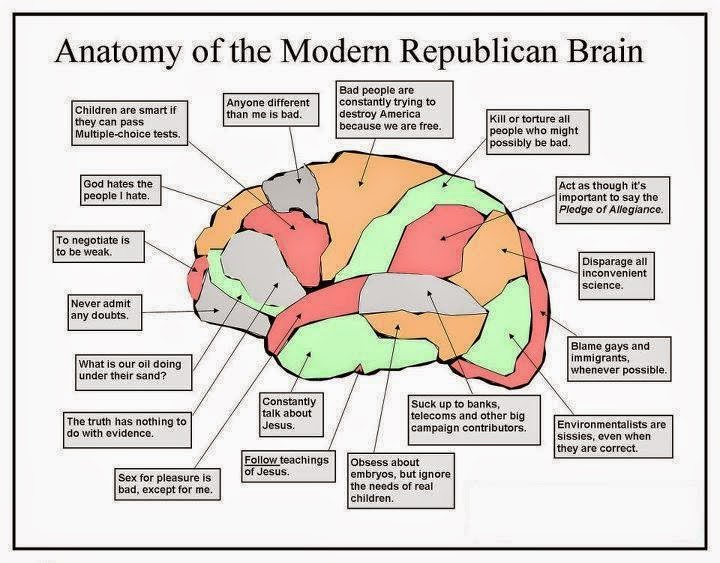 From there, it travels to the amygdala (“emotional brain”), which elicits an appropriate emotional response. nine0003
From there, it travels to the amygdala (“emotional brain”), which elicits an appropriate emotional response. nine0003
However, when a threatening situation arises, the thalamus sends sensory information to both the amygdala and the neocortex. If the amygdala senses danger, it decides in a fraction of a second to initiate the fight-or-flight response before the neocortex has time to cancel it.
This cascade of events triggers the release of stress hormones, including the hormones adrenaline and cortisol.
These hormones prepare your body for flight or fight by increasing your heart rate, blood pressure and energy levels, among other things. nine0003
While many of the threats we face today are symbolic, evolutionary in nature, our brains have evolved to deal with physical threats to our survival that require a quick response. As a result, our body continues to respond with biological changes. Which prepare us to fight or flee, even though there is no real physical threat to fight against.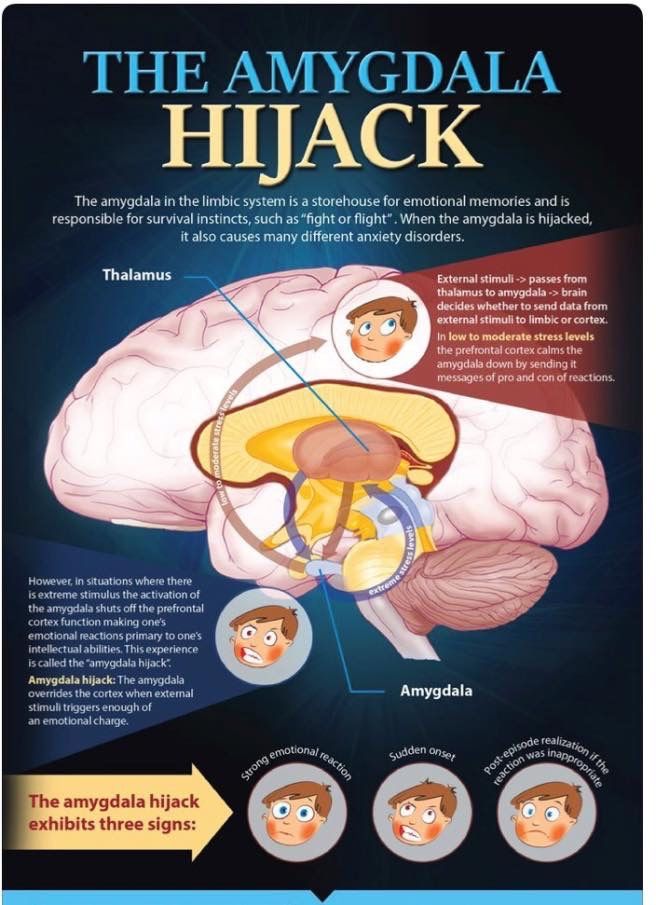
Mental health and amygdala
Chronic stress and certain mental disorders may also play a role in the functioning of fear circuits in the brain. Which can lead to an increased chance of tonsil trapping.
For example, people with post-traumatic stress disorder (PTSD) show greater activation of the amygdala and therefore heightened emotional responses, including fear and anxiety responses.
People with other anxiety disorders, such as social anxiety disorder and panic disorder, may also respond more strongly to their tonsils. nine0003
Even without a diagnosis of PTSD or anxiety disorder, chronic stress can lead to an overactive fear and anxiety circuit in your brain, which also reduces the functioning of other areas of the brain. Which help suppress fear, such as the hippocampus and the medial prefrontal cortex.
All of this means that chronic stress can lead to more amygdala seizures and even subsequent problems with short-term memory. Therefore, it is important to work on understanding your emotional reactions and controlling them. One way to do this is through preventive work. nine0003
One way to do this is through preventive work. nine0003
Learning coping mechanisms and planning for the future can positively influence how you react when you're stressed and help you avoid overreacting caused by the amygdala.
Prevention
The best way to prevent amygdala seizure is to increase your emotional intelligence. Emotional intelligence describes your ability to understand and manage your emotions. And also use this information in a positive way to relieve stress, communicate effectively, empathize with others, and resolve conflicts. nine0003
An emotionally intelligent person has strong connections between the emotional center of the brain and the executive (thinking) center.
Emotionally intelligent people know how to ease their emotions by becoming involved, focused, and attentive to their thoughts and feelings.
Although some people are naturally more emotionally intelligent than others. Like many skill sets, emotional intelligence can be developed.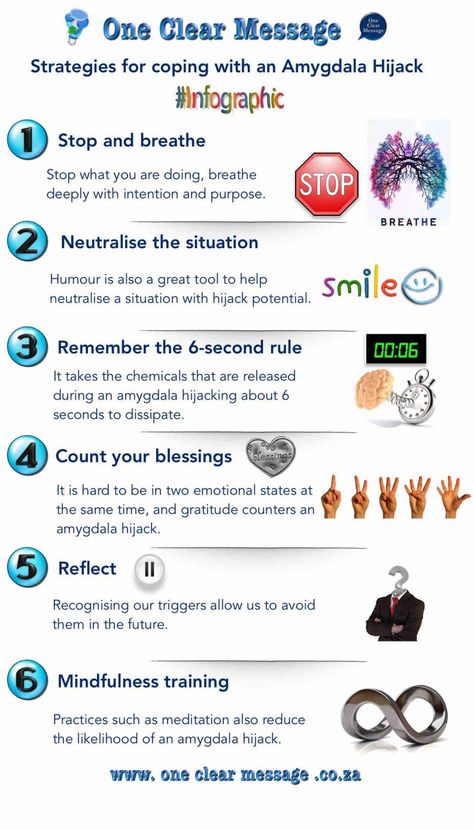 One way is to practice mindfulness. nine0003
One way is to practice mindfulness. nine0003
Mindfulness
Mindfulness is the ability to be fully present, aware of where you are and what you are doing. And don't be overly reactive or overwhelmed by what's going on around you. According to a 2014 study, mindfulness meditation can help improve your emotional intelligence in three main ways:
- Improves your ability to understand your own emotions
- Helps you learn to recognize the emotions of others
- Strengthens your ability to control your emotions
By practicing mindfulness every day, you will develop this part of your brain and make it stronger. Then, when you find yourself in a stressful situation, it will be easier for you to turn on the attentive part of your mind. If you're still having trouble with this concept, try writing down situations throughout the day that make you feel strong emotions.
Stress Management
Another key to preventing amygdala entrapment is to be aware of your stressors and recognize when acute everyday stress has become chronic.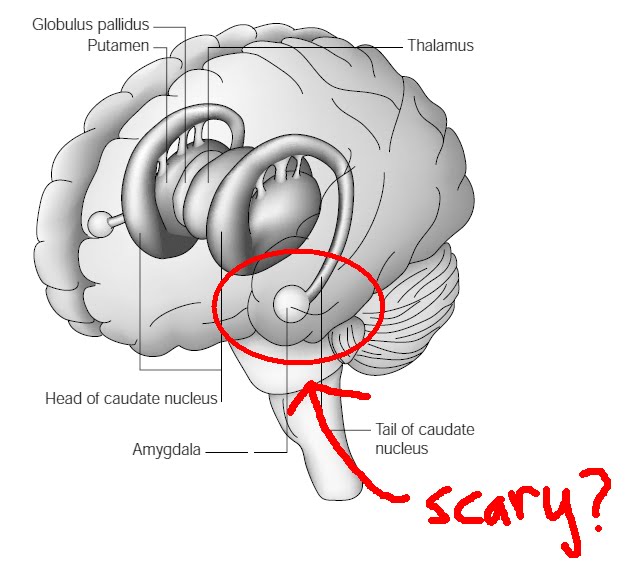 If you are constantly stressed out, stress management techniques can help. nine0003
If you are constantly stressed out, stress management techniques can help. nine0003
Effective stress management should include quick-acting stress relievers (eg, breathing exercises) for immediate stress relief in stressful situations. As well as healthy habits that reduce overall stress (such as exercise, meditation, and journaling).
While very effective in preventing tonsil entrapment, it may take time to learn how to incorporate mindfulness and stress management into your daily routine. If, despite your best efforts to prevent, you have not been able to cope. There are a number of things you can do to quickly curb your unwanted emotions:
- Name it. Pay attention to what worked for you and determine what triggers this process for you. Notice changes in your tone, tightness in your chest or stomach, tightness in your jaw or arms, etc. In these moments, say to yourself, "I feel energized right now."
- Remember the six second rule .
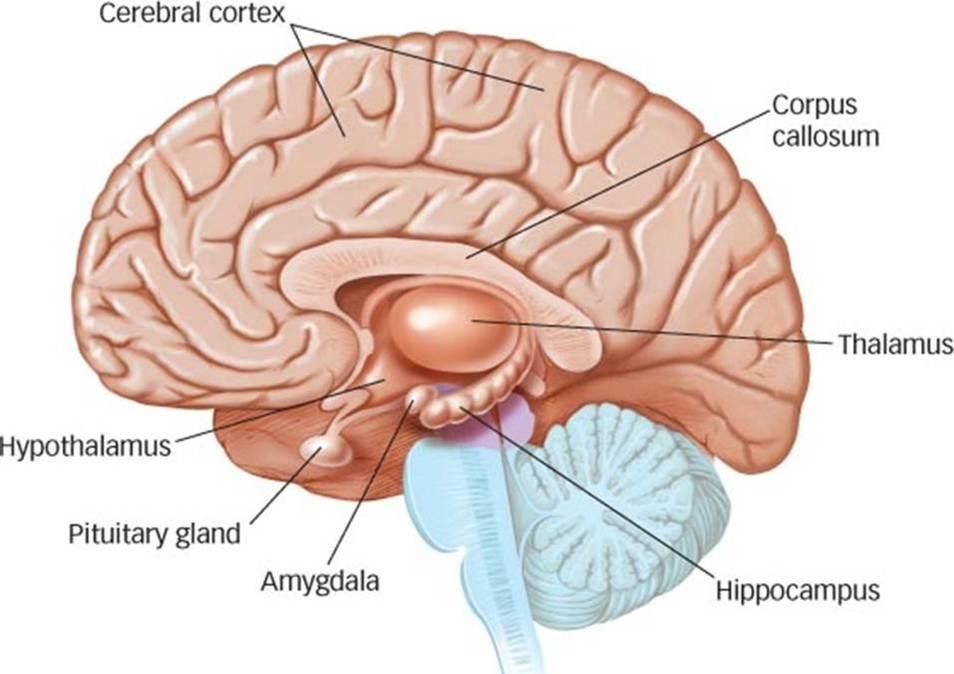 The chemicals that are released during the amygdala take about 6 seconds to dissipate. Using this time to focus on something pleasant will prevent your amygdala from taking control and triggering an emotional response. nine0056
The chemicals that are released during the amygdala take about 6 seconds to dissipate. Using this time to focus on something pleasant will prevent your amygdala from taking control and triggering an emotional response. nine0056 - Breathe those. Be aware of your breathing and slow it down. When you slow down your breathing and make it rhythmic, you activate the parasympathetic nervous system, which is your resting response. This type of deep breathing calms your nervous system and allows you to make informed decisions during stressful times.
- Use mindfulness. Look around and notice things in the environment. This will help you get out of your head and back into the present. nine0056
- Take a time out. If you really feel out of control, get out of the situation you find yourself in to take control of your emotions.
Although the ultimate goal may be to prevent an overreaction in the first place or to spread it now, it is okay to make mistakes.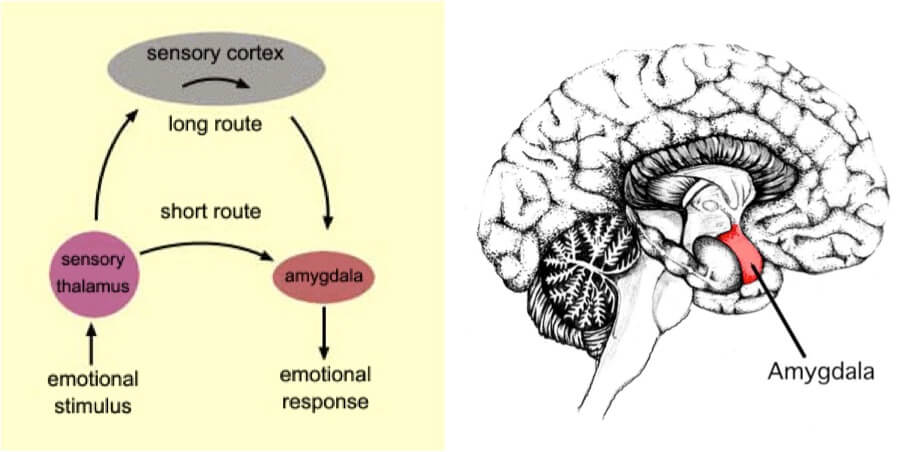 If you do find yourself after a full blown amygdala abduction, take the time to acknowledge your actions and analyze what happened. nine0003
If you do find yourself after a full blown amygdala abduction, take the time to acknowledge your actions and analyze what happened. nine0003
Taking some time to think about your reactions, especially if they are not a reflection of your best self, will help you consciously look at yourself from the outside. Over time, this practice will also help develop your emotional intelligence.
Abduction of the amygdala can be frightening due to a sense of loss of control and cause feelings of guilt and regret. But with practice, you can never let your emotional reaction get the better of you.
If mindfulness and stress management techniques are not helping, or if you need additional support, make an appointment with a mental health professional. Together, you can better understand and manage your emotions. nine0101
Read more here
Amygdala hijacking: when emotions take over
What is amygdala hijacking?
Amygdala explosion is an emotional response to stress. But to better understand what an amygdala grip is, you need to understand a little about how the brain functions. You also need to understand two specific parts of the brain: the amygdala and the frontal lobes.
But to better understand what an amygdala grip is, you need to understand a little about how the brain functions. You also need to understand two specific parts of the brain: the amygdala and the frontal lobes.
amygdala
The amygdala is a collection of amygdala cells located near the base of the brain. Everyone has two such groups of cells, one in each hemisphere (or side) of the brain. nine0003
The amygdala helps to identify and regulate emotions. They also retain memories and associate those memories with certain emotions (such as happiness, sadness, joy). These are the so-called emotional memories.
The amygdala is part of the limbic system of the brain. The limbic system is a group of complex interconnected structures in the brain that are responsible for a person's emotional and behavioral responses.
Fight or flight
The amygdala also activates the fight-or-flight response.
This response can help people in immediate physical danger respond quickly to their safety. For example, the fight-or-flight response helped early humans respond to threats to avoid injury or death.
For example, the fight-or-flight response helped early humans respond to threats to avoid injury or death.
The amygdala activates this "fight or flight" response without any initiative from you. When this part of your brain senses danger, it signals your brain to pump out stress hormones, preparing your body to either fight for survival or flee to safety. nine0003
Today, this fight-or-flight response is most commonly triggered by emotions such as stress, fear, anxiety, aggression, and anger.
Frontal Lobes
To understand the amygdala grip, you need to know about the second part of the brain: the frontal lobes. These two large areas are located in the front of the brain.
The anterior lobes are part of the cerebral cortex. This area of the brain regulates voluntary activities such as reasoning, thinking, movement, decision making, and planning. It is more rational than the amygdala. nine0003
The anterior lobes allow you to evaluate your emotions and then use your experience and judgment to consciously respond.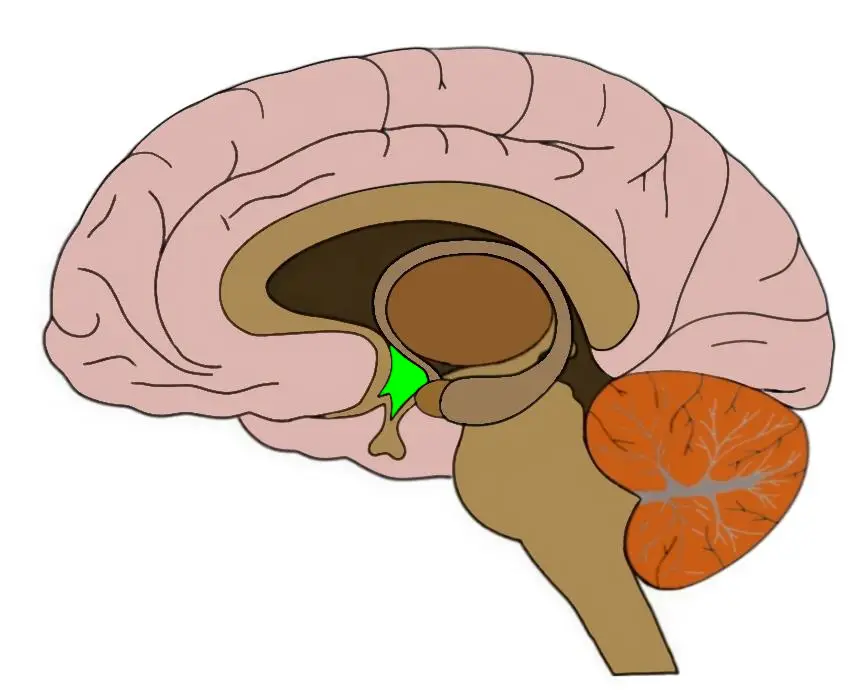 These reactions are not automatic like those generated by the amygdala.
These reactions are not automatic like those generated by the amygdala.
In the event of a physical threat, the amygdala may go into a "fight or flight" response, but the anterior lobes process the information you receive to help you determine if the danger is real. If the danger is not immediate, the frontal lobes help you decide what to do in response to stress. nine0003
In mild to moderate threat, the frontal lobes can often override the amygdala so that you can approach the situation rationally. But in the case of severe threats, the amygdala can trigger the fight-or-flight response.
For ancient people, the fight-or-flight response was vital. The threat of physical violence was very real.
However, today you are more likely to face psychological threats such as the pressure and stress of modern life, work and relationships. These emotions can also trigger a fight-or-flight response in the amygdala. nine0003
Anger, aggression, fear and stress are all common emotional triggers.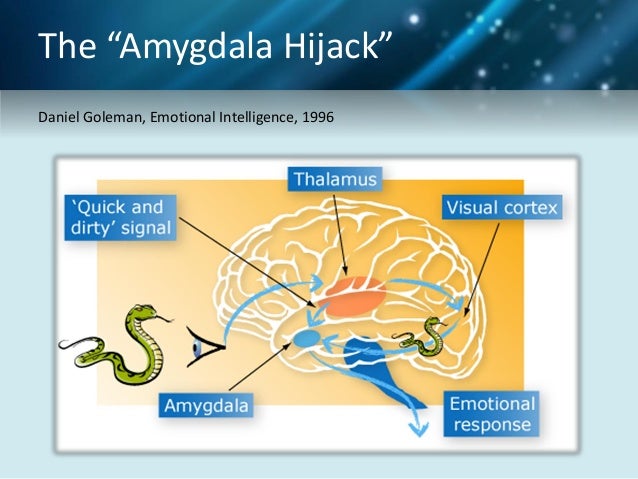 They can cause sudden, illogical and even irrational reactions.
They can cause sudden, illogical and even irrational reactions.
In his 1995 book Emotional Intelligence: Why It May Matter More Than IQ, psychologist Daniel Goleman called this over-reaction to stress "amygdala hijack." Amygdala hijack occurs when your amygdala responds to stress and shuts down your frontal lobes. This activates the fight-or-flight response and turns off rational, reasoned responses. In other words, the amygdala takes control of your brain and your reactions. nine0003
You can find the book for sale online.
Goleman was also responsible for popularizing the concept of emotional intelligence (EI). He explained how EI can help people manage their emotions and manage their behavior and thinking. Where amygdala seizure is natural and immediate, EI can help you regain control.
EI can also help you recognize other people's emotions so you can understand and influence them. However, Goleman's idea of EI emphasizes that people must first become aware of their own emotions and those of those around them before they can use them for others.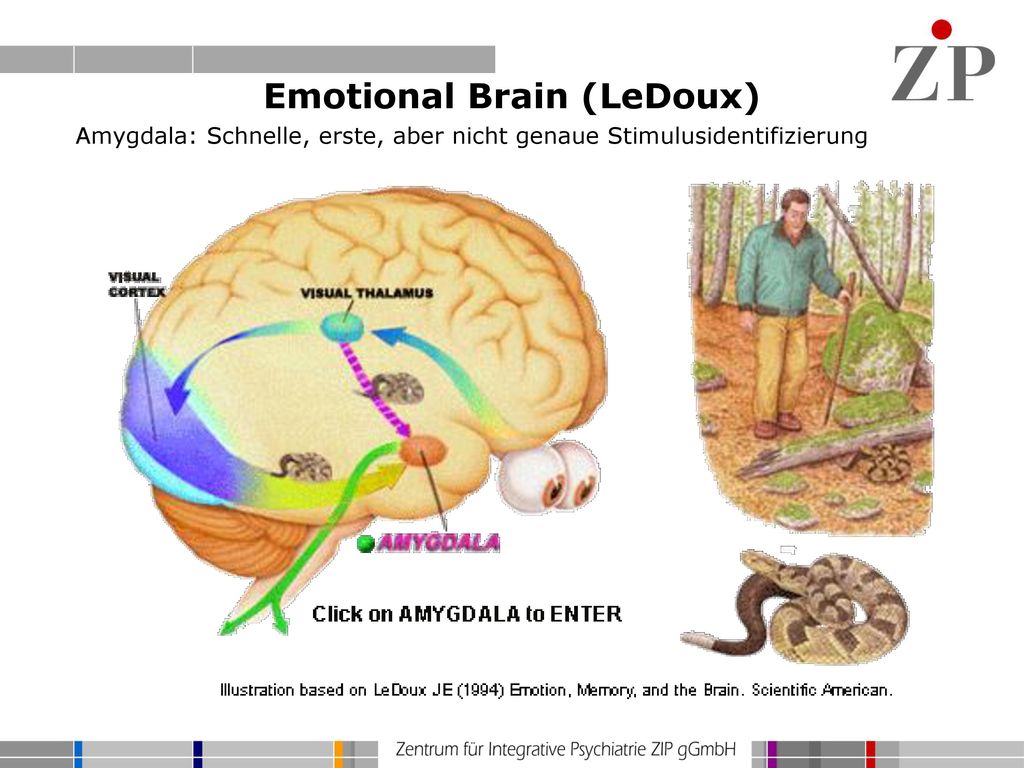 nine0003
nine0003
What are the symptoms of tonsil entrapment?
Tonsil entrapment symptoms are caused by the body's chemical response to stress. When you are stressed, your brain releases two types of stress hormones: cortisol and adrenaline. Both of these hormones, produced by the adrenal glands, prepare your body for fight or flight.
Together, these stress hormones do a number of things to your body in response to stress. They are:
- increase blood flow to your muscles so you have more strength and speed to fight or run
- widen your airways so you can take in and use more oxygen
- increase your blood sugar to provide you with immediate energy
- widen your pupils to improve your vision for faster responses
When these hormones are released, you can experience:
- rapid heartbeat
- sweaty palms
- clammy skin
- goosebumps
Amygdala entrapment can lead to inappropriate or irrational behavior.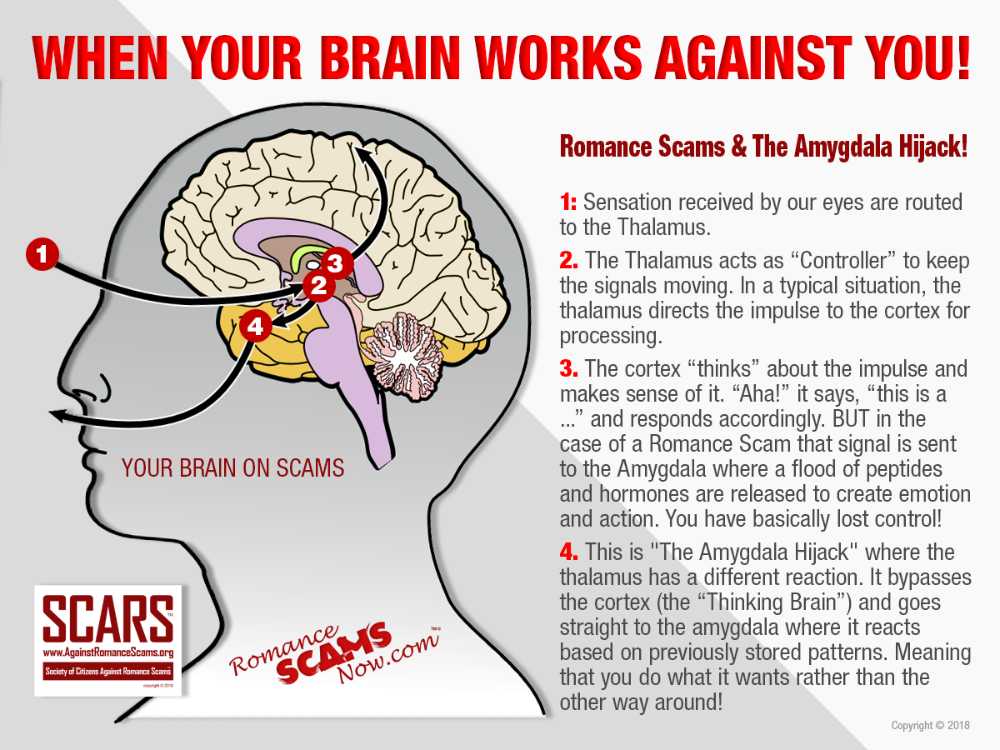 After an amygdala hijack, you may experience other symptoms such as embarrassment and regret. nine0003
After an amygdala hijack, you may experience other symptoms such as embarrassment and regret. nine0003
How to stop the seizure of the amygdala?
The amygdala grip is an automatic response. Your body is acting without any conscious participation on your part.
However, this does not mean that you cannot stop or prevent amygdala seizure. It takes a conscious effort to deactivate the amygdala and activate the frontal lobes, the part of the brain responsible for rational, logical thinking.
When you feel threatened or under great stress, acknowledge what your body is feeling and doing. This is your body's "fight or flight" response. Assess your emotions and physical symptoms, if any. (Initially, this assessment may need to be done after the episode, as it can be difficult to stop the hijacking at this point.
Then when you feel that reaction again, acknowledge it and try to regain control. Remind yourself that this is an automatic answer, but not the most logical one.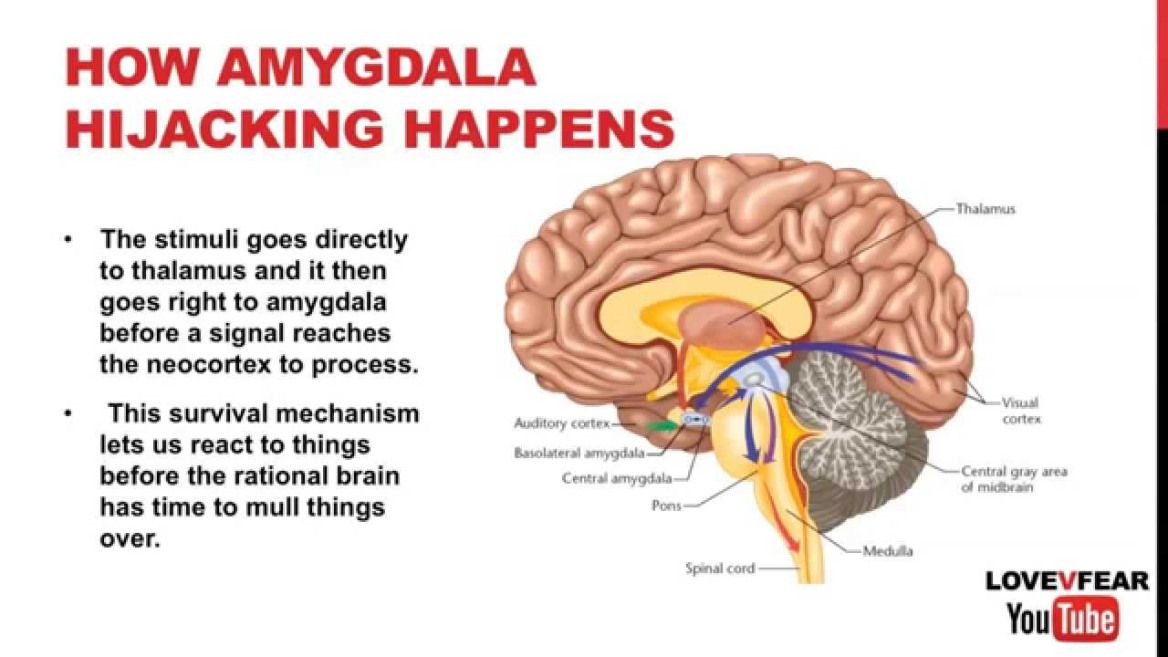
When you calm down or feel less stressed, you can activate your frontal cortex. Start by thinking about what triggered the response and how you felt. Then think about what answers you can and should get. These will be more thoughtful and rational answers. If you are still experiencing emotions at the moment, give yourself more time. nine0003
In the midst of the fight-or-flight response, breathing can be a powerful tool. Think about the speed of your breathing and work on slowing it down. Find a calm, natural rhythm. Focus on how your body feels as you breathe in and out.
After the response has passed, review what happened. Consider the triggers that led to the fight-or-flight response. When you recognize the warning signs and triggers, you can more easily deal with the stress that triggers the reaction in the first place. nine0003
How to prevent amygdala seizure
The best way to prevent amygdala seizure is to understand what triggers the reaction so you can avoid them.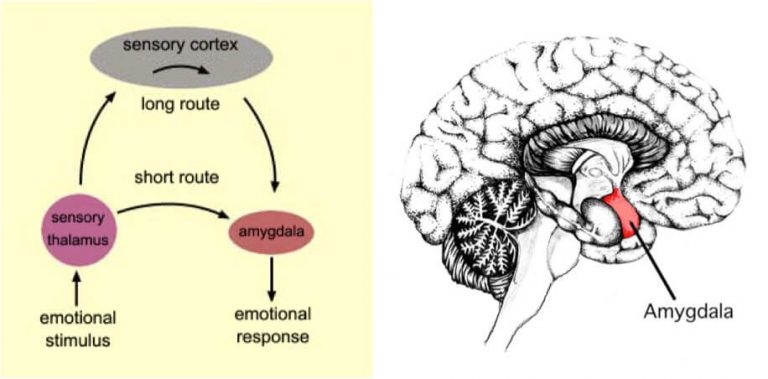 Alternatively, you can use practices such as mindfulness to better control your body's reactions when you feel a reaction.
Alternatively, you can use practices such as mindfulness to better control your body's reactions when you feel a reaction.
Emotional, mental, and even physical stress can trigger the amygdala's fight-or-flight response. When you feel the symptoms of an amygdala entrapment, pause. Pay attention to how you feel and what has brought you to this moment. Recognize any bodily changes you experience. nine0003
Also think about what caused these feelings. Most people's triggers fall into the same general categories (stress, anger, aggression), but each person's triggers are unique.
These are the initial steps of the practice called mindfulness. Mindfulness helps you to be more active and involved in your responses and choices.
Through mindfulness, you can take stock of how you feel and what motivates you, for example. You can learn to respond rationally and logically. This is another way of saying that you can take control away from the amygdala and return it to the frontal cortex.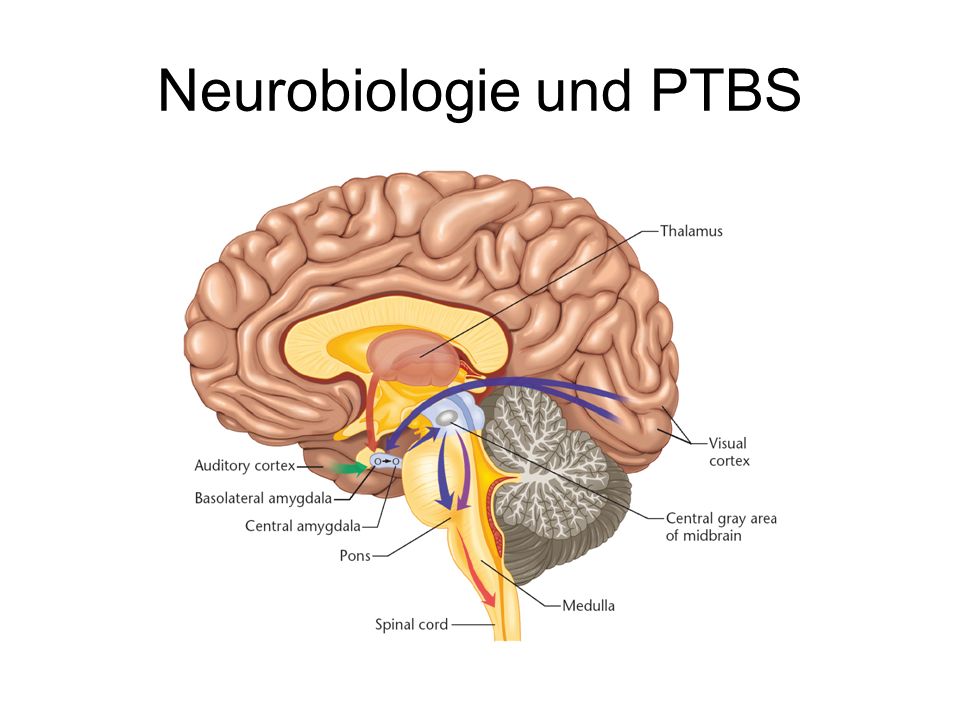 nine0003
nine0003
Mindfulness takes practice. It's easy to wander with your thoughts when you first try to focus on your body and feelings. But, as with many things, practice makes it easier.
It is also important to practice these techniques regularly, and not just when you are in a very emotional state.
One way to help focus your mind while practicing mindfulness is to actively control your breathing. Focus on inhaling and exhaling. Concentrate on how the air makes you feel in the moment, and notice how your body moves in response to the air. nine0003
While you can find other ways to prevent amygdala entrapment, these two are the main ones. By learning to avoid triggers, you can prevent your amygdala from taking over your emotional control. Mindfulness can help you slow down and reverse your emotional responses.
Techniques to stop the seizure of the amygdala
- Reasoning. Once you have calmed your emotional reaction, you can use reasoning and logic to process the situation.
This way you have options for how you will react and you can choose the one that best suits the situation rather than the one that elicits an emotional reaction. nine0056
- Attention. Use meditation or controlled breathing to focus your body's energy. This will help you respond peacefully to threat or stress. This will help you stop the amygdala hijack so you can maintain control.
Conclusion
The amygdala fight-or-flight response was beneficial to early humans. They were regularly exposed to real, immediate physical threats. Today it is not so.
The modern world is full of stress, but it is often caused by reactions to events such as natural disasters and conflicts, or even work, traffic, and quarrels with the family. The amygdala still reacts to this stress as if it were a physical threat.
However, you can prevent the entrapment of the amygdala. You can gain control over your brain's irrational emotional responses.